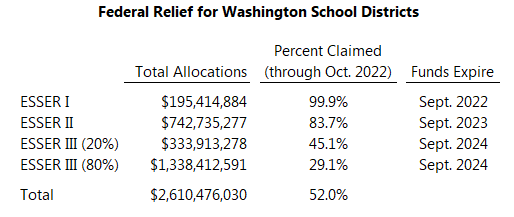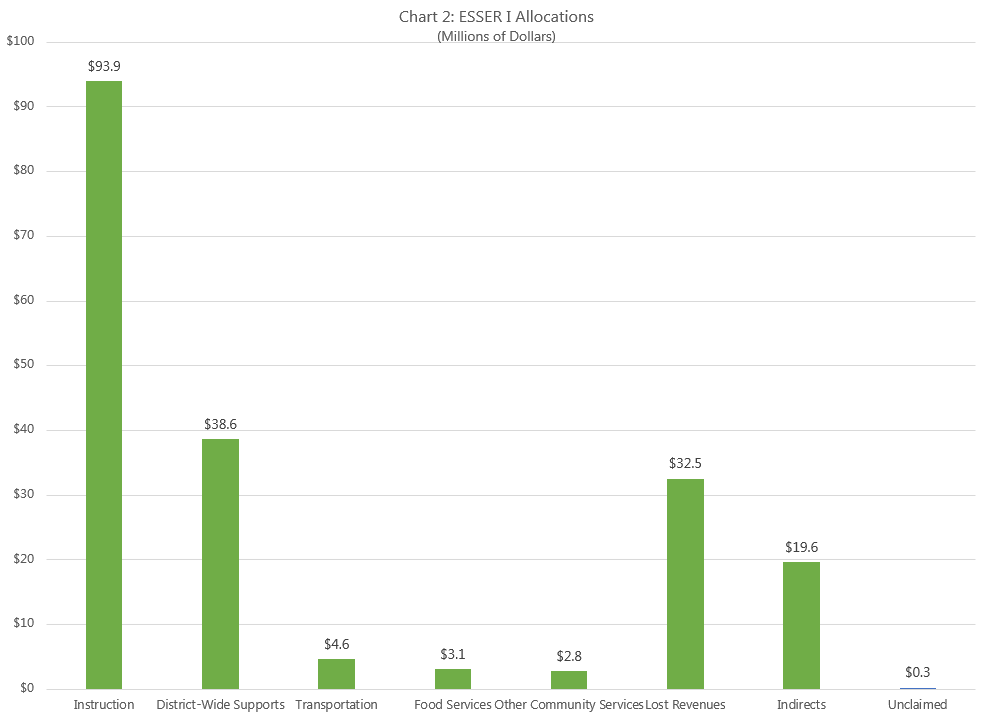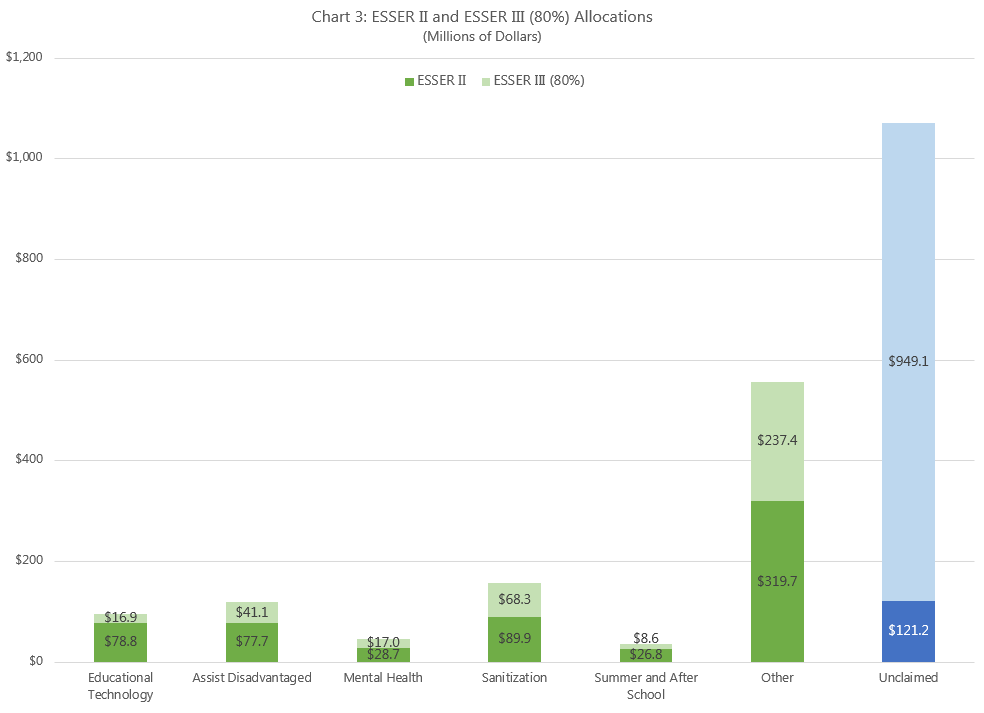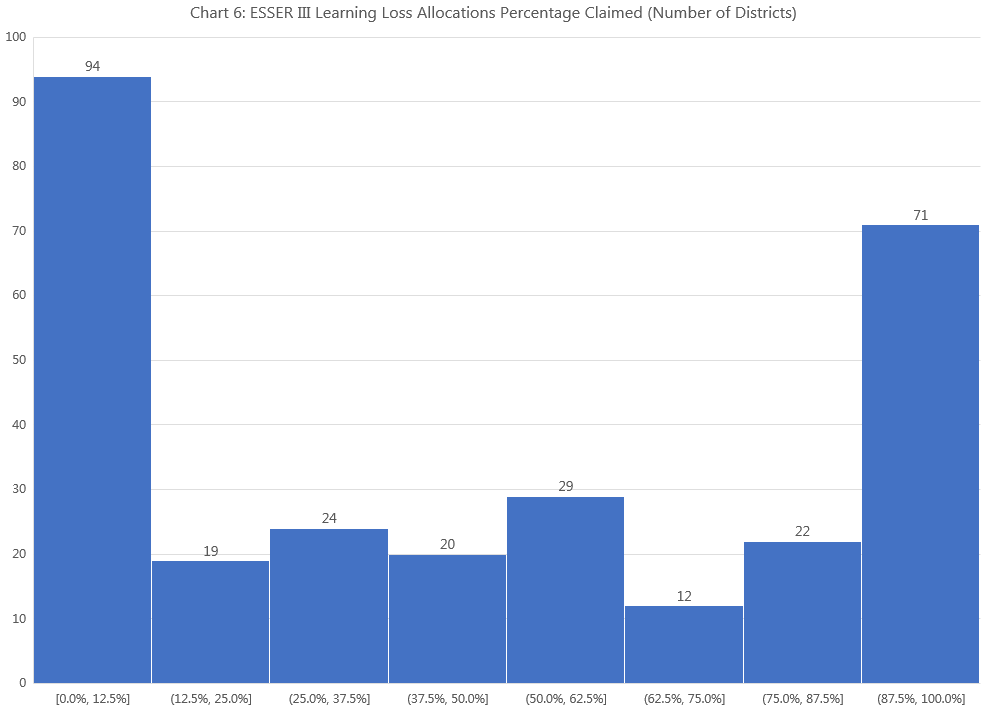11:23 am
November 10, 2022
Last week the Seattle Times editorial board wrote about recent student test scores and asked why so much of the federal relief money for schools is still unspent. Further, it wrote, “It’s puzzling to examine school district spending choices so far.”
There were three rounds of federal Elementary and Secondary School Emergency Relief (ESSER). Washington school districts’ total allocations for the three rounds are $2.610 billion. The funds are highly flexible, but 20% of the third round of allocations must be used to address learning loss. (The rest of the money could also be used to address learning loss, if districts choose.)

Through Oct. 2022, districts in Washington have claimed 52.0% of the total ESSER allocations. There is $1.254 billion remaining to be spent. Districts have claimed 45.1% of the ESSER III learning loss money and just 29.1% of the other ESSER III money. (The data in this post is all available from the Office of Superintendent of Public Instruction’s ESSER Funding Dashboard.)

Unfortunately, the spending data in the funding dashboard is categorized one way for ESSER I, another way for ESSER II and ESSER III (80%), and a third way for the ESSER III learning loss portion. For ESSER I, 73.2% of the total allocation was used for instruction, 19.8% was used for district-wide supports, 16.6% was used to cover lost revenues, and 10% was used for indirect costs (see chart 2). (Indirect costs are typically administrative costs like budgeting and purchasing, for example.)

For the ESSER II and ESSER III (80%) allocations together, 51.4% has not yet been claimed and 26.8% is categorized as “other.” (See chart 3.) According to the Office of Superintendent of Public Instruction, the “other” category is mainly indirect costs. Of the amount that has been claimed, spending categorized as “other” accounts for 55.1%. Meanwhile, of the amount claimed so far, spending on mental health is just 4.5% and spending to assist disadvantaged students is 11.8%.

For ESSER III (20%)—the dedicated learning loss portion—54.9% is as yet unclaimed, 25.5% was spent on direct supports, 9.3% was spent on one-time contracts, and 7.9% was spent on “other.” (Note that spending on one-time contracts includes one-time funding for staff to provide “academic and social emotional supports to students most impacted by the disruption of in person learning.” That includes one-on-one and small group instruction.)

Altogether, over all three rounds of federal relief, districts have spent 44.5% of the amount claimed so far on items categorized as “indirect” or “other.” Of the total allocations (including unspent money), that figure is 23.1%. Again, the “indirect” and “other” categories generally include administrative spending.
As usual, there is considerable variation among school districts. Eighteen districts have already spent their entire ESSER allocations. Two districts and the School of the Blind have not spent any of their allocations. As chart 5 shows, 169 districts have spent at least 50% of their total allocations. For ESSER III (20%)—the dedicated learning loss portion—56 districts have spent their whole allocation and 64 districts have not spent any. As chart 6 shows, 134 districts have spent at least 50% of their ESSER III (20%) allocations.


Tags: ARP Act , CARES Act , COVID-19 , state action on COVID-19
